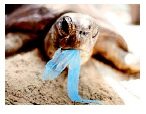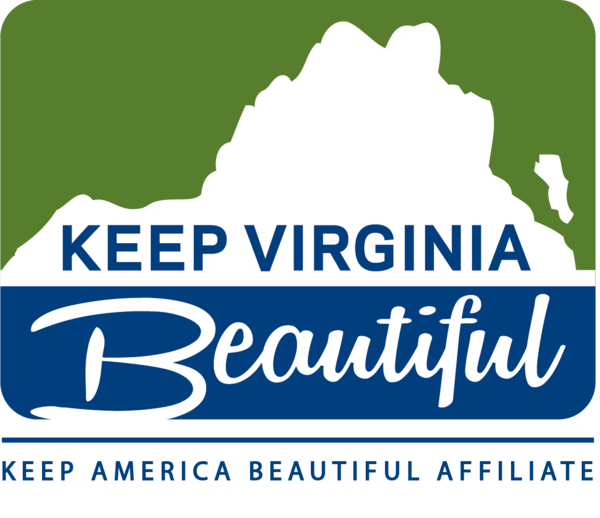Waste Watchers of the Eastern Shore Signs In!
Trash Talk, an occasional column about garbage by Jenny OʼNeill
A Sign of the Times
Have you seen the signs sprouting up in parking lots along the Shore? Look for them and pass the word to your friends and neighbors. This summer is Bring Your Own Bag season on the Eastern Shore. Waste Watchers is sponsoring this summer long campaign after being awarded $1000 as part of Keep Virginia Beautiful’s 30 in 30 contest. We used the grant money to put up signs with that same message. These colorful, double-sided aluminum signs are 18X24 and the design is by local artist Miriam Riggs. (If you want one for your own back door, to remind you as you head out, we will provide them at cost which is $30.)
Walmart and Food Lion in Onley already have theirs up so check them out and thank them for participating. Waste Watchers hopes to see them all around the Shore at Food Lions and Fresh Prides and Dollar Stores and other places where people appreciate being reminded to Bring Your Own Bag. It would be a nice touch to have our Shore pride represented up and down Highway 13 with a local message for a sustainable practice. This is not a radical proposal and sustainable is not a dirty word. Waste Watchers is suggesting that this summer we all make an effort to get in the habit of Bringing Our Own Bags to the store. In my case it took me at least 6 months to really get the habit, but Iʼm a slow learner, so the summer is a good place to start.
Many localities are banning plastic bags or making them cost consumers, but thatʼs not likely to happen here. What we can do is Reduce the use of them in the first place, Reuse them when possible (they are great for lining waste baskets, picking up poop, or carrying tennis shoes just for starters) and then, Recycle them. Here on the Eastern Shore our plastic bags are recycled and thatʼs a good thing. What would be better would be to use less of them altogether.
Weʼve all seen plastic bags blowing in the wind, across the fields, hanging from the trees, and bobbing along the beach. Here on the Shore this is a sadly common sight. Plastic bags, along with other litter, line our roadways. (Can you believe Iʼm glad the weeds are growing because they hide the roadside trash? Itʼs one of the summerʼs illusions that I actually look forward to. After the long fall, winter, and spring of looking at the garbage in the ditches Iʼm relieved not to see it. But I digress.)
As a Trash Talker for Waste Watchers of the Eastern Shore Iʼve been referring to plastic, made from petroleum, as having come from dinosaur bones. My idea was to illustrate how old it was. Well, I was wrong. Turns out that itʼs made from stuff even older than the dinosaurs. Tiny little marine life, plants and animals, millions and millions of years ago, even before the dinosaurs roamed the earth, died and were buried at the bottom of the ocean. Silt and rock covered it and over millions of years the pressure and heat of it all created what today we call petroleum or crude oil. This is what we make both plastic and gasoline out of.
The point is this: plastic, which is made from petroleum, took eons to make. We use it for a few minutes. In the time that it takes to unwrap the gift from the packaging, to tote home the groceries, to slake our thirst from bought water in a plastic bottle, it is gone. For a few minutes we may futilely try to warm our fingers on the styrofoam cup and when weʼre done we throw it away. Thereʼs a lack of balance in this equation. Imagine the scales: On one side we have a nonrenewable resource made from pre-dinosaur creatures and plants millions of years old; on the other we have something made from this resource that we use one time and throw away. See the imbalance?
Americans throw away 2,500,000 plastic bottles every hour. Thatʼs just in this country. As for styrofoam cups we throw away 25 billion of them every year. Billion, trillion, or gazillion itʼs a huge and shocking amount because styrofoam doesnʼt biodegrade. It doesnʼt break down in nature. It stays around forever. The same thing is true of plastic bags. Which is why, although they have their place in modern lives, it would be a very good thing if we could all use less of them.
Those bags you see in the fields? They cost a farmer thousands of dollars in tractor repairs when one gets caught up in the works. Those bags in the water? Sea turtles think that theyʼre jellyfish and take a fatal bite, clogging their intestines and blocking their airways.
In the trees they hang like some malignant moss, some weird symbol hanging along the roadway. And it is a symbol. Litter telegraphs loud and clear that we donʼt care about where we live.
I’m sure that everyone reading this is saying “Hey, thatʼs not true of me.” And I believe you, but we shouldnʼt kid ourselves: going easy on litterers ultimately costs us more than prosecuting them would. That, however, is a subject for another day.
Bring Your Own Bag- itʼs a Shore thing.

Jenny OʼNeill is the Coordinator of Waste Watchers of the Eastern Shore

